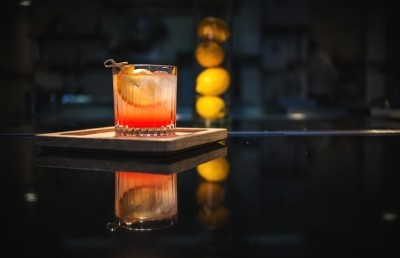No-alcohol wine bottles should be designed to reflect more than 'health' benefits

No- and low-alcohol have flourished in the past few years and the sector is set for further growth between 2021-2025, according to ISWR. While the latest report from Wine Intelligence says younger and millennial demographics are the ones driving the no-low category.
As a wine producer, it would be a mistake not to address the demand from these consumers. But it has to be provided in the best way possible: both from a product perspective and a design perspective.
No one wants to arrive at a party with a wine that looks like a diet drink...
For no-alcohol wine there is a particular problem. It has traditionally been perceived as the worst imitation of its alcoholic counterpart. With wine, when you strip out the alcohol, you strip out the flavour. Flavour then has to be reintroduced, which then makes the liquid sweet: tasting like a fruit juice, not wine. It's a tricky problem to fix.
There are wine producers who have made great strides in overcoming the issue. But, if you've managed to crack it, you then need your no-alcohol wine to look the part alongside traditional wines, while at the same time standing out as a premium product.
Leaders in the no-alcohol drinks market, like Seedlip, have long understood that those looking to reduce their alcohol intake still love a beautifully designed bottle. The problem with the no-low wine category is that it's currently saturated with packaging which suggests a sacrifice in quality. The loud “0% alcohol” call-outs and “wine-light” messaging give the sense of something compromised.
"People don’t want their choices to scream 'what I'm having is different.'"
While the Wine Intelligence report shows health and moderation are the key drivers behind the demand for no-low alcohol, this doesn't mean that when it comes to social occasions people want to virtue signal. They don't want to arrive at a dinner party with a wine that looks like a diet drink.
It's time for producers to stop the message of compromise. Yes, by all means, convey that it contains less or no alcohol, but use all of the cues of the category to communicate that this is something consumers will enjoy drinking.
There needs to be a balance between the functional benefits - those that come from cutting out alcohol - and the emotional benefits - the feelings that you get when you pour yourself a glass of wine or have a drink with friends.
It's like coffee. I can't drink caffeine, but I still love the taste of coffee. I love the sociability of having a cup of coffee. I love the fact that I walk outside and it's a break in my morning. Just because it's decaf, doesn’t mean I can't enjoy those things. People don’t want these kinds of choices to scream "what I'm having is different".
This is an important point for branding and packaging: treat the label as you would a full-strength product. Give it the love, attention, personality, and premium cues that you would any other wine.
No-alc wine brands like Sobriety Society and Plus & Minus both have created beautifully crafted, refined, and premium packaging. Although each brand has a very distinctive personality that shines through in their designs, they both make the consumer feel special.
Bottles need to look good on the table
When we designed the branding and packaging for no-alcohol wine Hand on Heart for Miller Family Wines, the result was very much inspired by the idea that any of the bottles could be placed on the dinner table alongside the full-strength wines.
Instead of overwhelming the space with proclamations about diets, we wanted to signal that there is a quality drink inside.
The bottle has a clean background, with a textural, off-white label.
It's designed to assure anyone considering a bottle that, despite lacking alcohol, it's a drink that doesn't require you to make a sacrifice.
Brands shouldn’t forget that they can do so much with language too.
Take Tread Softly. We designed the wine and spirits brand's new no-alcohol wine range. It's called “Everything Except” and with those two words, the name signals that the wine has everything its full-strength counterparts have, except the alcohol.
It's about determining the most appropriate design that befits each individual brands' personality.
At the same time as giving consumers the choice they crave, I also believe that brands have a social obligation to offer non-alcoholic alternatives. If you look at the UN's Sustainable Development Goals, which set out how all countries around the world can protect the planet and ensure prosperity for all people, ensuring healthy lives and promoting well-being is one of the 17 goals. So, as corporate citizens, we need to be able to offer consumers the choice of whether they want an alcoholic version, or not, of our products.
Health means different things to people and, whatever reason they want no-alcohol, they should still be able to feel like they can participate in social occasions or group activities and not feel like they are singled out or missing out.
A beautifully crafted bottle, with packaging designed to reflect the quality of what's inside, must be the future of no-alcohol wine.












